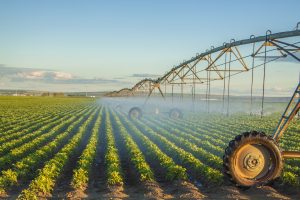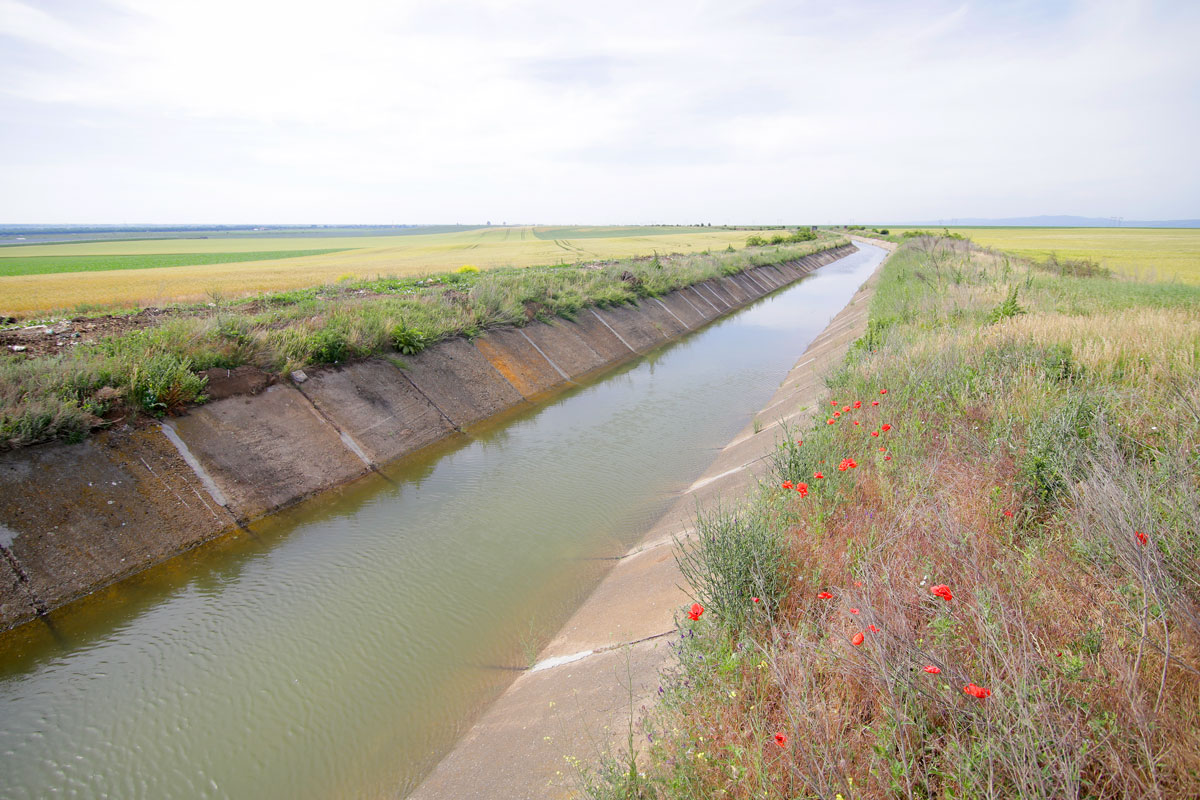 Question: I own a farm and would like to monitor how much water is being used in a safe, lead-free way; how do you recommend accomplishing this? Continue reading “Clean and Safe Water Totalization”
Question: I own a farm and would like to monitor how much water is being used in a safe, lead-free way; how do you recommend accomplishing this? Continue reading “Clean and Safe Water Totalization”
Monitoring Center Pivot Irrigation Systems
 You arrive at a large field, small sprouts peeking out of the soil. At the center of the field lies a structure connected to a span of pipe from which sprinklers hang. Trusses brace and support its weight. From the air, this field would appear to be a perfectly circular patch of green.
You arrive at a large field, small sprouts peeking out of the soil. At the center of the field lies a structure connected to a span of pipe from which sprinklers hang. Trusses brace and support its weight. From the air, this field would appear to be a perfectly circular patch of green.
Center pivot irrigation systems are one of many ways to distribute water to crops. As its name suggests, this method involves rotating around a central pivot point. When the machine rotates, it releases water from the sprinklers and irrigates crops. (Agrivi.com) By using this system, farmers can ensure a uniform application of water across an entire field. Continue reading “Monitoring Center Pivot Irrigation Systems”
Open Channel Flow Monitoring
 Open channel flow monitoring is a method of measuring water flow rates in irrigation channels, streams, and storm water systems. It’s also used in wastewater processing for monitoring the effluent discharge. In most applications for open channel flow, weirs and flumes are used. For those of us not familiar, weirs and flumes concentrate the flow into a known cross sectional area, relating an accurate level reading to an accurate flow rate. The height of the water in the channel, going over the weir or flume, is directly proportional to the flow rate. Continue reading “Open Channel Flow Monitoring”
Open channel flow monitoring is a method of measuring water flow rates in irrigation channels, streams, and storm water systems. It’s also used in wastewater processing for monitoring the effluent discharge. In most applications for open channel flow, weirs and flumes are used. For those of us not familiar, weirs and flumes concentrate the flow into a known cross sectional area, relating an accurate level reading to an accurate flow rate. The height of the water in the channel, going over the weir or flume, is directly proportional to the flow rate. Continue reading “Open Channel Flow Monitoring”
Well Water Monitoring for Irrigation Systems
 Irrigation is fundamental to the production of food all over the world. Most of us have seen the large center pivot systems used on many farms today, and there are a number of other technologies that are designed to deliver water to crops to allow them to flourish. Less prominent, however, are the systems that collect and deliver water to these irrigation systems to allow for crop growth. Continue reading “Well Water Monitoring for Irrigation Systems”
Irrigation is fundamental to the production of food all over the world. Most of us have seen the large center pivot systems used on many farms today, and there are a number of other technologies that are designed to deliver water to crops to allow them to flourish. Less prominent, however, are the systems that collect and deliver water to these irrigation systems to allow for crop growth. Continue reading “Well Water Monitoring for Irrigation Systems”
ESD and Surge Issues in Pumping, Pressure Boosting, and Irrigation Applications
 Electrostatic discharge (ESD) is a unique phenomenon that can be seen in everyday life. The effects of ESD can be seen by rubbing a balloon on your head, resulting in your hair sticking to the balloon, or by touching a doorknob or a pet in a dry building and receiving a static shock.
Electrostatic discharge (ESD) is a unique phenomenon that can be seen in everyday life. The effects of ESD can be seen by rubbing a balloon on your head, resulting in your hair sticking to the balloon, or by touching a doorknob or a pet in a dry building and receiving a static shock.
In irrigation, well water pumping, and pressure boosting applications, ESD can cause larger issues than just a small shock to your finger. Because plastics used in PVC pipes are insulators, the moving water builds up static electric charges. Eventually, this static electric buildup will discharge through an ungrounded pathway (e.g. instrumentation or sensors used to control a pump). Continue reading “ESD and Surge Issues in Pumping, Pressure Boosting, and Irrigation Applications”



